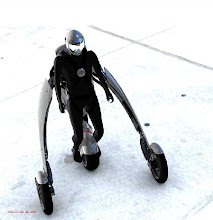VMware View 3 enhances virtual desktops
By Daniel Robinson 3 December 2008
VMware has updated its virtual desktop product with enhancements that
make it easier to provision and manage virtual clients, and new capabilities
that support mobile workers on laptops.Released today, VMware View 3 is a
rebranding of the firm's Virtual Desktop Infrastructure (VDI) but with several
new features.
Key among these is View Composer, which can provision virtual
machines by combining a fixed master image with changeable user data stored
separately, dramatically cutting the storage required for virtual
clients.
The second key feature is Offline Desktop, which lets a worker
download their corporate virtual client onto a laptop and take it out of the
office.
Tommy Armstrong, VMware's senior marketing manager for enterprise
desktops, explained that the development is about broadening out virtual
desktops for customers looking at more strategic deployments.
"The number one
thing customers told us they need for virtual desktops is to bring down the
initial capital investment, for example in storage requirements," he
said.
View Composer addresses this by splitting each virtual client into the
operating system, applications and user data such as files and
settings.
"Firms can manage lots of clones linked back to a single master
image. Any commonality - Windows XP, service packs - is in that 'golden master'.
The deltas [differences], which contain anything unique, can be much smaller,"
Armstrong said.
This can reduce storage requirements by up to 90 per cent
compared with traditional virtual desktop deployments, VMware claimed, as well
as enabling centralised patching and backup of the virtual
clients.
Meanwhile, Offline Desktop enables firms to implement a virtual
desktop strategy even if they have roaming users or some workers connected via a
high latency connection. It combines VDI with another VMware product, ACE, that
lets firms distribute virtual machines with corporate policy mechanisms applied
to them.
"We're bringing these together so users can connect to their virtual
desktop over the network as usual, but if a user wants to run their virtual
machine locally they can 'check out' their desktop and run it on the local
machine," said Armstrong.
Users can check their desktop back in when they
reconnect to the network, or check in a backup, a delta file that just updates
the datacentre image with any changes.
This will also allow users to make use
of local resources for demanding applications, such as those that are
graphics-intensive, according to Armstrong.
"It's about being able to run
apps where it makes most sense, being able to move the virtual machine between
datacentre and the client itself, the access device, if necessary," he
said.
View Manager 3, VMware's connection broker (previously called Virtual
Desktop Manager) can now connect users to a Terminal Services session or to
physical PCs, such as blade workstations, as well as virtual clients.
Other
enhancements address the end-user experience with virtual printing support,
better USB redirection and improved multimedia handling.
Virtual printing
lets the user print to whichever printer is currently attached to their access
device, whatever or wherever that may be, according to VMware. USB redirection
now allows for a broader range of peripherals to be connected to the access
device and used with the virtual desktop.
With View 3, VMware has licensed
Wyse's TCX technology for better media handling. This recognises media files,
such as music and video, and sends them to the endpoint access device to be
played locally.
VMware View 3 currently supports only Windows, but Armstrong
strongly hinted at future Mac support, enabling users to check out their
Windows-based corporate virtual client to an Intel-based Mac laptop, for
example.
Copyright © 2008 vnunet.com
Great news for these virtual machine users.
Link: http://www.vmware.com/products/view/whatsincluded.html


No comments:
Post a Comment